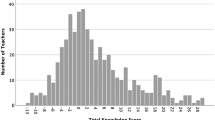Conclusion
In summary, the steps one might follow in establishing an educational plan for dyslexic children, within the framework of general education, are:
-
1.
Identifying the problem.
-
2.
Building a commitment to try to solve the problem.
-
3.
Increasing awareness of the problem, self-awareness, as well as that of others.
-
4.
Developing and implementing a plan of action to help the children.
-
5.
Evaluating the implementation of the plan and revising it when necessary.
-
6.
Maintaining progress.
Before even beginning to develop these six steps, there must be acceptance of the responsibility toward dyslexic children, right where they are—in the home, school, or community. We must cease our babble of excuses and passing of responsibility to others. If we care about people, if we weep inside at their pain, then we mustdo something about it, to the limits of our capabilities. We should be content with no less.
Similar content being viewed by others
References
Behrman, P. 1975. Reading, ’riting, ’rithmetic and respect.J. of Learning Disabilities 8(9):22–23.
Cruikshank, W. 1978. Abstract of address.ACLD Newsbriefs July/August, p. 4.
Boder, E. 1973. Developmental dyslexia: a diagnostic approach based on three atypical reading-spelling patterns.Develop. Med. and Child Neurol. 15(5):663–687.
Barrett, C. 1965. Visual discrimination tasks as predictors of first grade reading achievement.The Reading Teacher. January. pp. 276–282.
Colarusso, R., Martin, H. and Hartung, J. 1975. Specific visual perceptual skills as long-term predictors of academic success.J. of Learning Disabilities. December, pp. 52–56.
Gillingham, A. and Stillman, B. 1966.Remedial Training for Children with Specific Disability in Reading, Spelling, and Penmanship. Cambridge, Massachusetts: Educators Publishing Service, Inc.
Goins, J. 1958.Visual Perceptual Abilities and Early Reading Progress. Chicago: University of Chicago Press.
Orton, S. T. 1937.Reading, Writing and Speech Problems in Children. New York: W. W. Norton Company.
Slingerland, B. 1967, 1977.Screening Tests for Identifying Children with Specific Language Disability. Forms A, B, C, D. Cambridge, Massachusetts: Educators Publishing Service, Inc.
Slingerland, B. 1971.A Multi-Sensory Approach to Language Arts for Specific Language Disability Children. Cambridge, Massachusetts: Educators Publishing Service, Inc.
Slingerland, B. 1977. A Definition of Specific Language Disability. Mimeographed paper.
Slingerland, B. Undated. Points About SLD Children to Be Considered. Mimeographed paper.
Author information
Authors and Affiliations
Additional information
This article is based on a paper by Dr. Oliphant at the 29th Annual Conference of The Orton Society in Minneapolis, November 1978.
Rights and permissions
About this article
Cite this article
Oliphant, G.G. Program planning for dyslexic children in general education. Bulletin of the Orton Society 29, 225–237 (1979). https://doi.org/10.1007/BF02653744
Issue Date:
DOI: https://doi.org/10.1007/BF02653744




